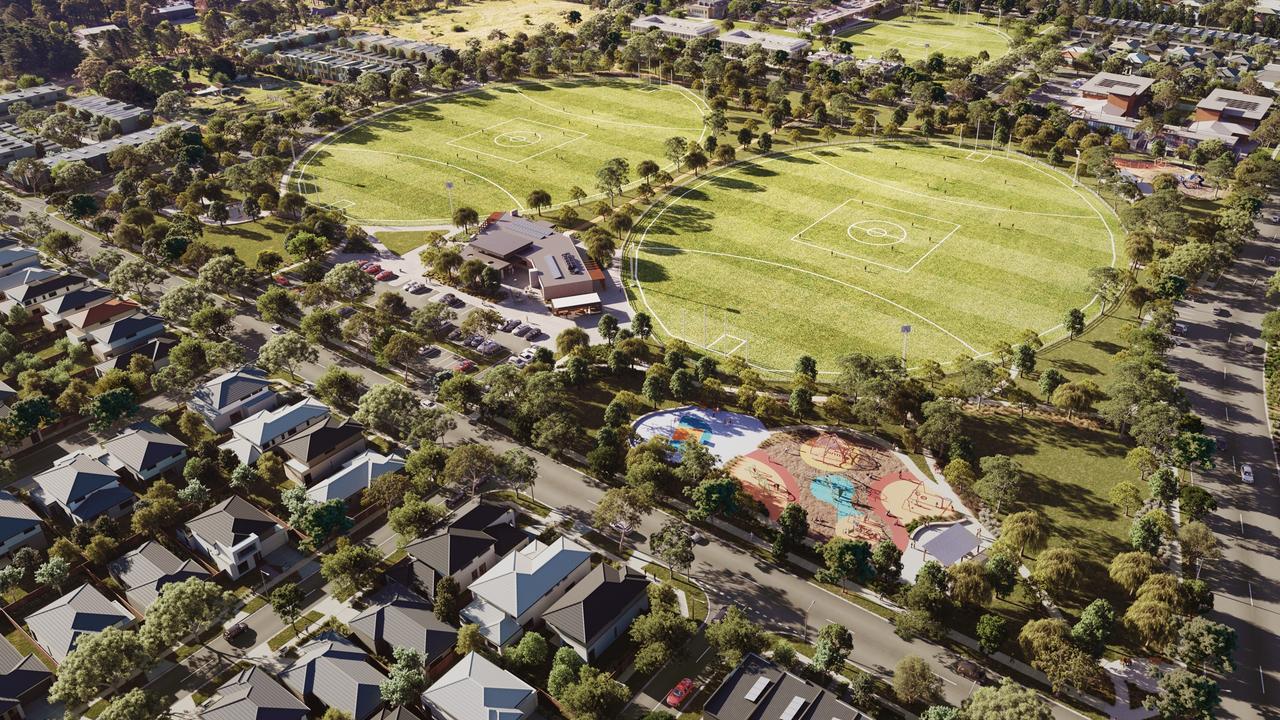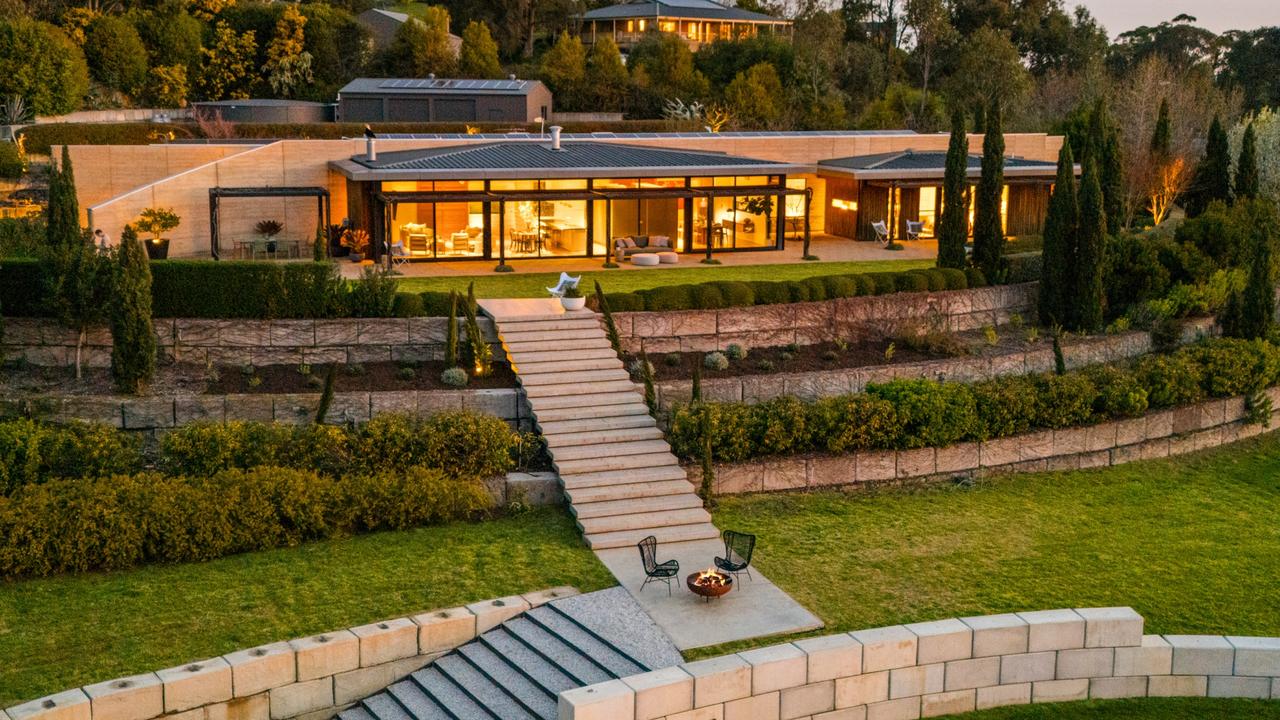Victorian elections used to spell violence and chaos before secret ballots were introduced
Election day in Melbourne sparked shop invasions, smashed windows, flying punches and even the firing of guns before secret ballots were introduced.
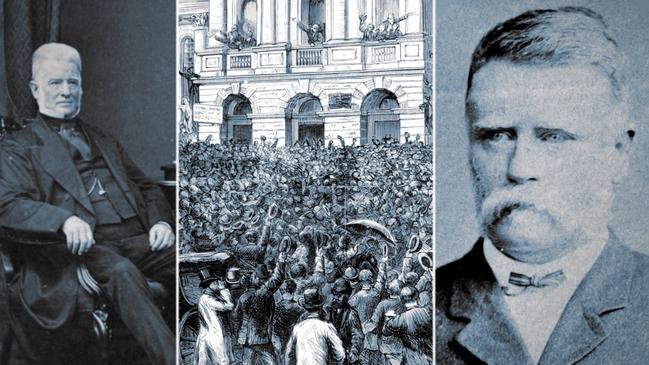
Victoria
Don't miss out on the headlines from Victoria. Followed categories will be added to My News.
In the days before votes were cast in secret, Australian elections were much-anticipated calendar events for all the wrong reasons.
In the colony of New South Wales, which included what is now Victoria until the separation of 1851, only the elite were allowed to vote.
Men who owned property worth more than 200 pounds, or who rented property at a rate higher than 20 pounds per annum, were given a ballot.
As a result fewer than 600 people in the Port Phillip District were on the roll.
But thousands more ordinary citizens showed up on polling day to watch the flawed process play out, even booking seats close to the action.
And everybody knew who voted for whom.
The votes were announced on a public stage and a tally of which voters supported which candidates was even published in newspapers.
At the end of the day, there was inevitably a fight of some sort – sometimes an all-out brawl.
Bribery, coercion and vote-buying were, without doubt, rampant in the colonial elections.
Candidates often represented one religious denomination or another, encouraging sectarian division.
To make tensions worse, the candidates would often supply alcohol to the crowds to boost their popularity, putting pressure on enrolled voters to support them.
In one such election – the first public vote in Melbourne in 1843 – the results were bloody.
Mob rule
Melbourne was founded in 1835 as a mere village.
Eight short years later the Port Phillip District was large enough to gain a seat in the New South Wales Legislative Council.
In the first major election in Melbourne, Catholic Edward Curr ran against Presbyterian Henry Condell, who was also the first mayor of the booming town.
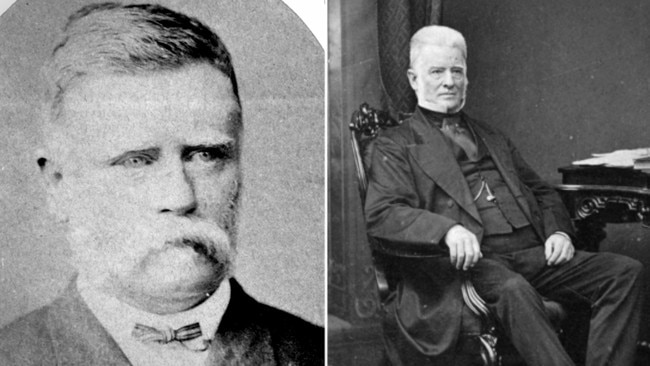
Polling day on June 17, 1843, had a festival atmosphere, laced with tension.
Newspaper accounts tell of boozed-up crowds of supporters toting banners — led by marching bands funded by the candidates — clashing in laneways and at the front of the polling station.
When it became clear that Curr wasn’t going to get enough votes, verbal threats turned to punches.
Supporters of Curr rushed to the Golden Fleece Hotel near Russell St searching for Condell, intending to do God knows what.
When they couldn’t find him, the mob instead packed Collins St, where a squad of constables was sent in for crowd control.
A senior constable’s address to the crowd went something like:
“The election is over now and what’s the use of losing your heads over it?
“No amount of broken pates can unsettle it. All of you had better disperse peaceably, for if you don’t I’ll precious soon make you.”
Next came a literal reading of the Riot Act.
It had little impact.
When mounted constables pulled their sabres on the mob to disperse them, some in the crowd to attempted to knock them off their horses, leading to a slashed arm.
In the chaos that followed the close of voting at 4pm, shops were invaded, windows were smashed and an untold number of bruises were exchanged between Curr and Condell backers.
It continued into the night.
At one point the crowd turned on Thomas Green, a business owner on Elizabeth St.
After windows were smashed, Green retrieved a firearm and shot into the crowd from an upstairs window, wounding a rioter in the back and another in the foot.
When votes were fully tallied, Condell defeated Curr with 295 votes to 261; a total of 556 votes.
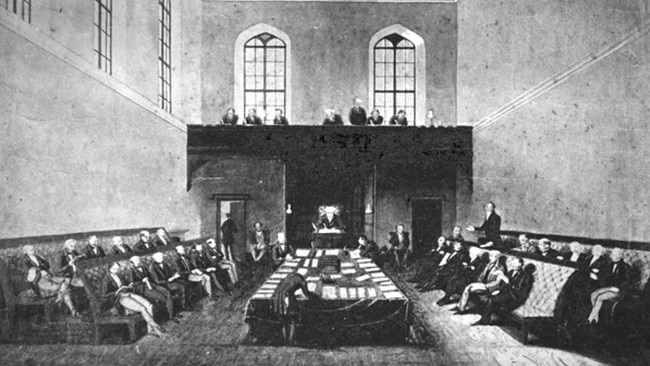
But Curr ran a successful campaign two years later and was duly elected to the New South Wales Legislative Council.
The Australian ballot
It was clear the colonial voting system simply wouldn’t do.
If elections were to pass in an orderly way without drunken brawls and gun violence, a new method of voting would have to be introduced.
By the mid-19th century, the secret ballot was in its infancy.
Victoria was widely regarded as the first place in the world to implement a new form of voting in March 1856, with South Australia putting the method into law a fortnight later.
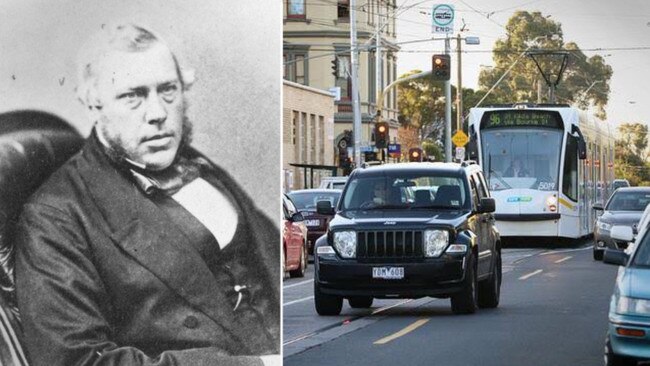
William Nicholson, who became Victoria’s third premier, was an instrumental figure in developing the new process, which would anonymised ballots and help eliminate vote buying, fraud and violent polling days.
Nicholson St, a famous Melbourne thoroughfare running between Victoria’s new Parliament House on Spring St and Brunswick East, was named in his honour, but his political work echoed through time to shape democracies throughout the world.

By 1858 the secret ballot, which became known as the Australian Ballot internationally, involved the distribution of government-printed papers and the marking of electors names from an electoral roll.
Following Australian success with the new method, the first secret ballot election in the United Kingdom was held in 1870, owing much to the work of Nicholson and his Victorian colleagues.
However, it has since been argued that Tasmania was the first jurisdiction to introduce the secret ballot, in February 1856.
Despite an early move on the secret ballot, Victoria was the last state to allow women to vote, introducing female suffrage in 1908, 24 years after the establishment the Victorian Women’s Suffrage Society, the first of its kind in Australia.
Although Indigenous people began voting across Australia in the mid-19th century, it was not until 1962 that universal suffrage for Indigenous people in federal elections was introduced.
More Coverage
Originally published as Victorian elections used to spell violence and chaos before secret ballots were introduced



